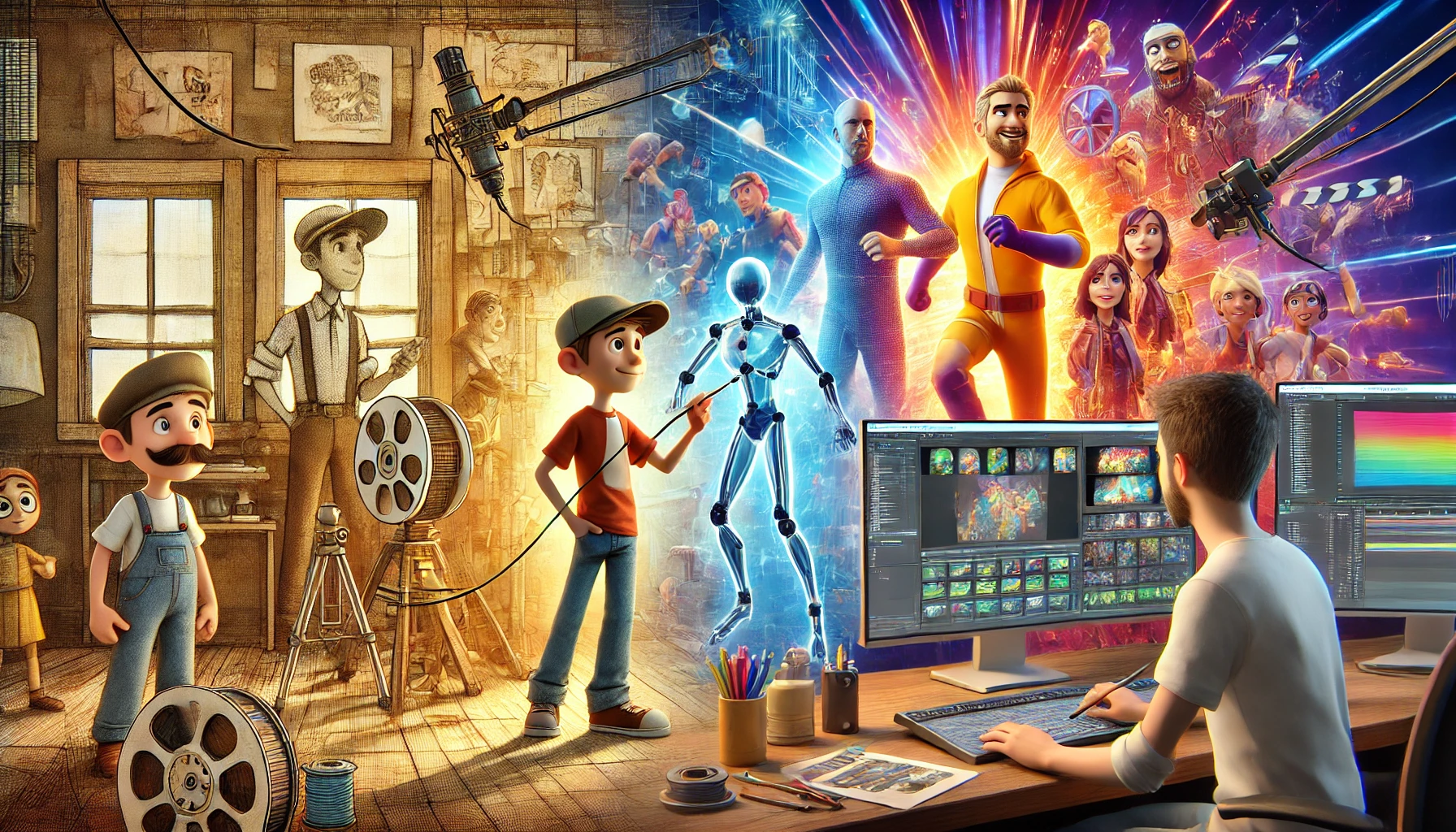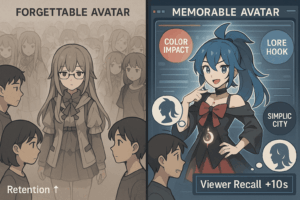3D animation has dramatically transformed the world of animated film, changing how audiences experience storytelling and animation. From traditional hand-drawn animations like Snow White to modern CGI masterpieces such as Frozen and Toy Story, 3D animation has expanded the possibilities of animated films, bringing new life to the genre. This blog will explore how 3D animation has forever altered the landscape of feature films, animated films, and animated feature-length films.
1. The Beginning of 3D Animation in Feature Films
Before 3D animation, films relied on traditional hand-drawn techniques, with iconic characters like Bugs Bunny from Warner Bros.’ Looney Tunes. Films like Snow White (1937) and Pinocchio (1940) brought beloved characters to life but lacked the realism 3D animation would later offer. The breakthrough came with Toy Story (1995), the first full-length CGI film, developed by Pixar Animation Studios. This marked a turning point, offering a more immersive experience with 3D environments. Traditional animation techniques, like flipbooks, were replaced by advanced software such as Autodesk Maya and Blender, allowing animators to design and manipulate characters and scenes with unprecedented precision, bringing animation to life.
2. The Golden Age of Animated Feature Films
The 1990s and early 2000s marked the “Golden Age of Animated Feature Films,” where 3D animation revolutionized the industry. During World War II, animation was used for propaganda by studios like Warner Bros. and Disney. However, 3D animation’s success went beyond lifelike characters, capturing audiences in new ways.
Animated films, previously aimed solely at children, began to target both kids and adults. Movies like Shrek (2001), Finding Nemo (2003), and The Incredibles (2004) featured sophisticated storytelling and humor that appealed to a wide range of viewers. By 2025, 3D animation technology rivals live-action films in quality, with stunning visuals seen in Frozen II (2019) and Zootopia (2016). The switch from traditional cel animation to computer-generated imagery (CGI) revolutionized the industry. CGI allowed for more efficient production, providing greater precision and enabling the creation of visually stunning animated films, unlocking new creative possibilities and captivating audiences worldwide.
3. Animated Feature Films and Their Evolution
The animation industry has seen a shift from traditional hand-drawn animated films to 3D-animated feature films. As technology improved, filmmakers realized that they could tell stories that pushed the boundaries of imagination, offering experiences never before seen on screen.
Toy Story and Beyond
The release of Toy Story in 1995 marked a pivotal moment in animation history as the first full-length CGI film. Its success launched a new era of animated features, including Shrek, Monsters, Inc., and Finding Nemo. These films pushed the boundaries of animation, blending innovative visuals with engaging storytelling. The legacy of Toy Story and its successors continues to inspire filmmakers and animators, shaping the future of the industry.
Characters with Depth and Motion
In traditional animated films, characters were two-dimensional and drawn with limited motion. In contrast, 3D animation allows for three-dimensional characters that can move in a lifelike way. The characters can interact with their environments, creating a more immersive experience. The ability to manipulate lighting, camera angles, and depth adds realism to the characters and makes the viewer feel as though they are part of the animated world.
The Popularity of Animated Features
Today, animated feature films have become a global phenomenon. In 2025, the worldwide revenue for animated films reached $10 billion, with films like Frozen II grossing over $1.45 billion globally. The power of 3D animation has revolutionized the entertainment industry, allowing animation studios to create feature-length films that captivate audiences worldwide.
4. Impact of 3D Animation on Adventure and Mystery Genres
Animated films have also paved the way for the blending of genres, particularly in the adventure and mystery categories. The ability to create dynamic environments and characters with 3D animation allows filmmakers to craft stories filled with action, suspense, and intrigue.
Movies like Moana (2016) and The Lion King (2019) use 3D animation to transport audiences to far seas and magical lands. In Moana, the immersive, 3D worlds allow viewers to experience a journey across the long-lost waters, navigating treacherous and uncharted seas prompted by her ancestors. From the magical landscapes of Frozen to the vast, animated cityscapes in Big Hero 6 (2014), 3D animation opens doors to limitless adventures.
3D animation can enhance the mystery genre by creating intricate and detailed environments, where every object and scene can hold a clue. Animated films such as The Great Mouse Detective (1986) and Who Framed Roger Rabbit (1988) blended mystery and animation with elements of intrigue and suspense. As technology improved, 3D animation took these films to new heights, offering visually stunning mysteries for the modern audience.
5. The Power of 3D Animation in Bringing Complex Stories to Life
Animated feature films are known for telling intricate and emotional stories, but 3D animation adds another layer of depth to the narrative by showcasing how characters’ lives transform and grow. The way characters move, express emotions, and interact with the world helps bring their stories to life in a more relatable way.
Complex Storytelling with Realistic Motion
3D animation allows storytellers to create films with a level of realism that traditional animation cannot achieve. An unexpected call can spark a character’s journey. As a result, it sets them on a pivotal adventure filled with challenges and growth. Characters are no longer limited to simple movements. Instead, they can move in ways that reflect human-like gestures and expressions, creating a deeper emotional connection with the audience. For instance, in Inside Out (2015), the characters’ movements and emotions are carefully crafted. Consequently, this allows the audience to truly feel the depth of their experiences.
Merging Fantasy and Reality
Through the magic of 3D animation, filmmakers can create entirely new worlds that blend the lines between fantasy and reality. 3D animations like Avatar (2009) and Kubo and the Two Strings (2016) showcase how animated films can immerse audiences in fully realized worlds while maintaining a high level of fantasy.
6. Animated Feature Films and Their Cultural Influence
Animation has always held a mirror up to society, reflecting the cultural, social, and political climates of the times. With 3D animation, filmmakers can add layers of meaning and symbolism that resonate with audiences of all ages.
3D animation has made it easier for studios to incorporate diverse characters and cultures into animated films. Characters like the young girl in Brave (2012) and Moana (2016) challenge traditional gender norms and introduce new narratives. By using 3D animation, filmmakers are able to create characters that look and feel authentic to various cultural backgrounds.
The global appeal of 3D animated films is unmatched. With the ability to create lifelike characters and dynamic worlds, animated films are now enjoyed by audiences worldwide. In 2025, the box office revenue for animated feature films in China surpassed $1 billion, proving the global popularity of 3D animation.
7. How 3D Animation Reignited Interest in Classic Animated Films
The rise of animation has also led to a resurgence of interest in classic animated films. Many studios are now recreating beloved films using 3D animation, offering new generations a chance to experience these classics in a whole new way.
Films like The Lion King (2019) and Aladdin (2019) used 3D animation to bring new life to iconic stories from Disney’s past. These films remain beloved by audiences, thanks to their timeless storytelling and innovative animation.
The ability to create nostalgic experiences using 3D animation has helped filmmakers reconnect audiences with older films. As a result, this nostalgic appeal has become a powerful tool in modern filmmaking. This emotional connection has led to massive box-office success. For example, the Toy Story franchise has grown into a multi-billion-dollar empire, thanks to its groundbreaking use of animation.
9. The Magic of Music in Animated Films
Music has always played a crucial role in animated films, helping to convey emotions, enhance the storyline, and immerse viewers in the world of the film. With 3D animation, the integration of music with the visuals has become even more seamless. In animated films like Coco (2017), the vibrant animation and poignant musical score work together beautifully. As a result, they create a deeply emotional experience for the audience. Moreover, 3D animation can synchronize perfectly with the rhythm of music. This allows for a more profound connection with the viewer.
Music also plays a key role in the development of animated characters. Characters like Elsa in Frozen (2013) and Simba in The Lion King (1994) have become iconic. Moreover, the memorable songs that accompany their journey play a big role in their lasting impact.
10. Animated Films as a Cultural Reflection of Life
3D animation has allowed filmmakers to explore more complex themes. As a result, they can reflect life’s challenges and joys in a way that resonates with diverse audiences. Animated films like Up (2009) and The Incredibles (2004) tackle complex themes of family, identity, and personal growth. The ability of 3D animation to express these themes in a visually captivating way makes them more accessible to viewers of all ages.
Conclusion
3D animation has transformed animated feature films forever. As a result, it allows creators to craft more intricate, immersive, and emotionally resonant stories than ever before. As technology continues to advance, the potential for innovation in animated films is limitless. If you want to bring your animated feature ideas to life with cutting-edge technology, 3DAiLY has the perfect solution. Moreover, our hybrid approach blends patented technology with skilled in-house artists to create stunning 3D models and characters faster and more affordably than ever. Don’t let your ideas remain a dream – let’s create something incredible together!



